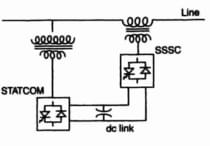 |
| Digital Electronics MCQs |
1. The decimal equivalent of (101111.1101)₂ is_______.
a. 51.6328
b. 47.8125
c. 38.6254
d. 52.6789
2. The range of numbers that can be represented using 6-bits in signed binary number representation is________.
a. -31 to +32
b. -32 to +32
c. -32 to +31
d. -31 to +31
3. The 7-bit even parity Hamming code of the binary bits 0101 is______.
a. 0 0 1 0 1 0 0
b. 0 1 0 0 1 0 1
c. 1 0 1 0 0 1 0
d. 1 1 0 1 1 0 1
4. The ASCII code is a_______.
a. Alphanumeric code
b. Cyclic code
c. Weighted code
d. Reflective code
5. Which of the following 4-bit binary pairs does not forms a Gray code pair?
a. 0101, 0100
b. 1110, 1010
c. 1010, 1001
d. 1100,1101
6. Which of the following code is correct regard of excess-3 code ?
a. It is a BCD code
b. It is a self-complementing code
c. It is an unweighted code
d. All of the above
7. Multiplication of two binary numbers A and B is 11011. If A = 011, then B is_____.
a. 0101
b. 1011
c. 1100
d. 1001
8. Which of the following statement is not correct, in regard to the "GRAY CODE"?
a. It is a unit distance code
b. It is a reflective code
c. It is a BCD code
d. It is a cyclic code
9. The ASCII is an input code which is a_____.
a. Seven bit code
b. Eight bit code
c. Two bit code
d. Four bit code
10. The number of bits required to represent an eight digit decimal number BCD is_____.
a. 24
b. 8
c. 16
d. 32
11. An example of self complementing code is______.
a. 8421 code
b. XS-3 code
c. Gray code
d. 7421 code
12. When signed numbers are used in binary arithmetic, then which one of the following notations would have unique representation for zero?
a. 9's complement
b. 2's complement
c. 1's complement
d. Sign magnitude
13. Addition of all gray code to convert decimal(0-9) into gray code is______.
a. 53
b. 69
c. 108
d. 129
14. The binary number, 110011 is to be converted to gray code. The number of gates and type required are________.
a. 5, XOR
b. 6, XOR
c. 6, XNOR
d. 6, AND
15. Three Boolean operators are______.
a. NOR, NAND, NOT
b. NOT, NAND, OR
c. NOR, OR, NOT
d. NOT, OR, AND







0 Comments
If you have any doubt, feel free to ask.